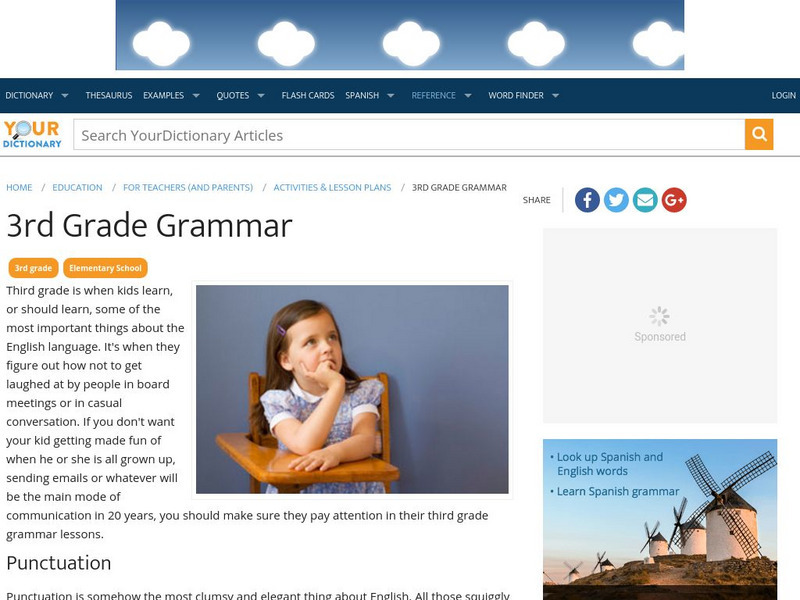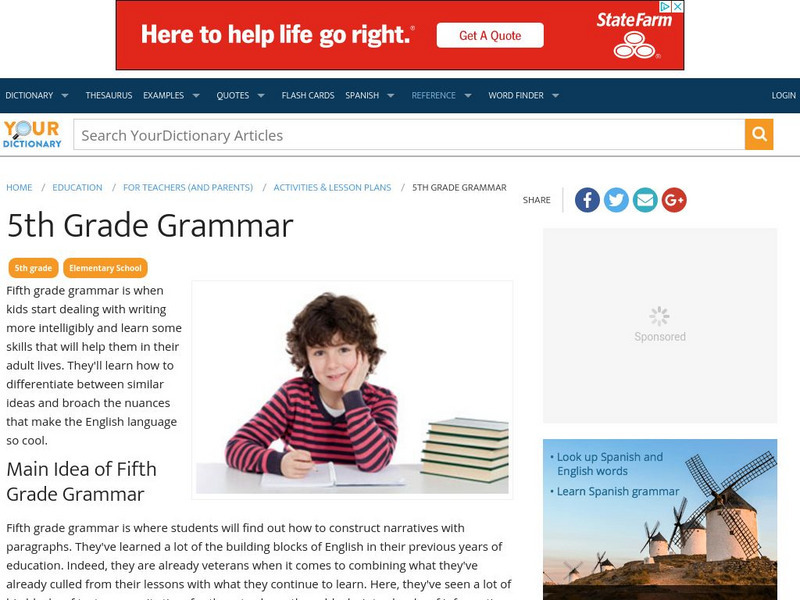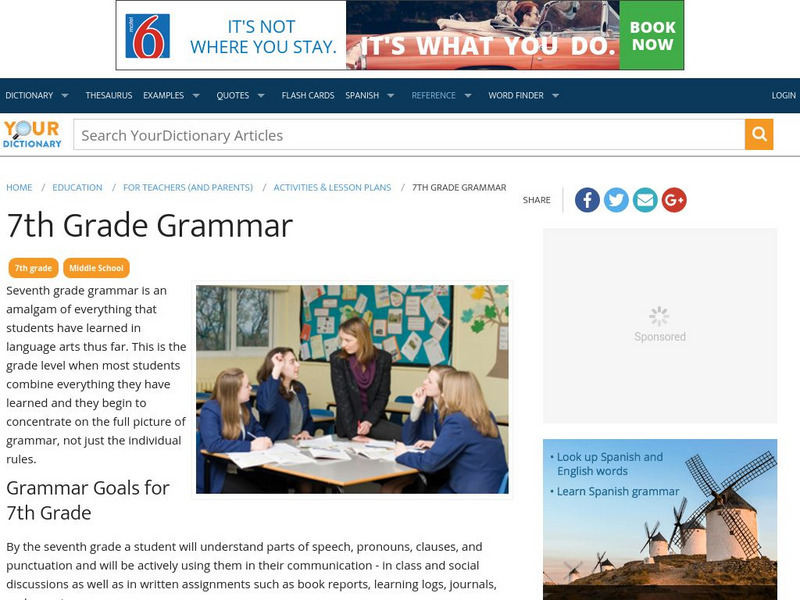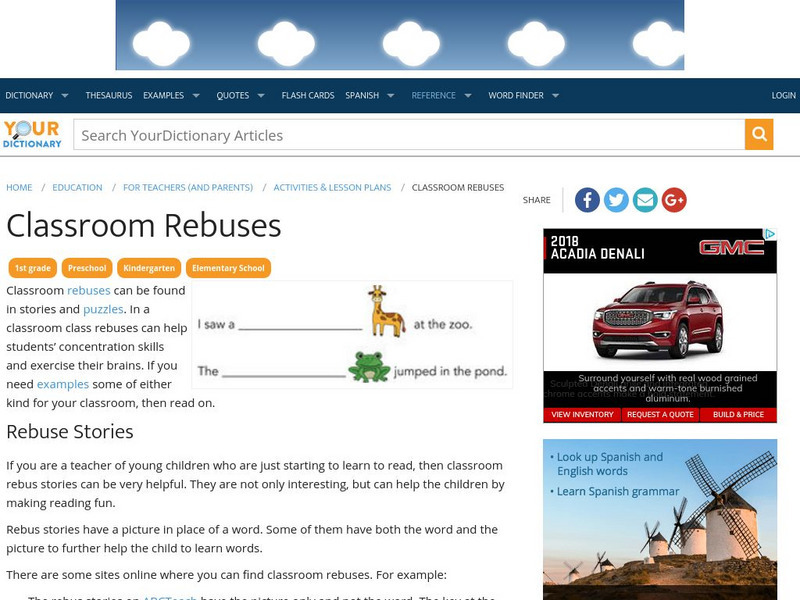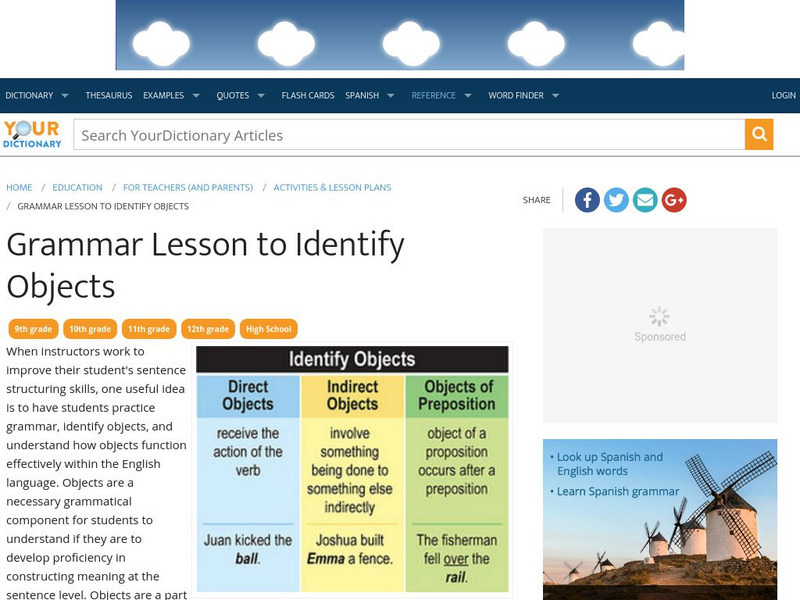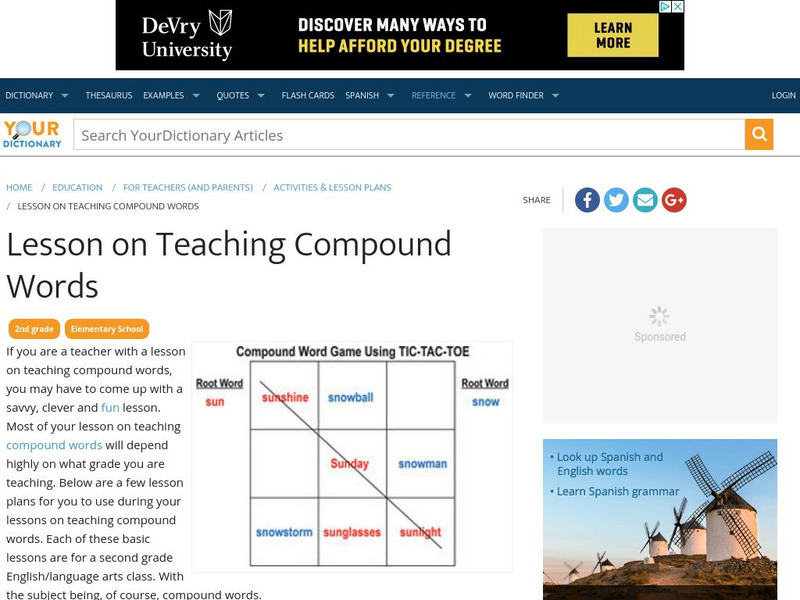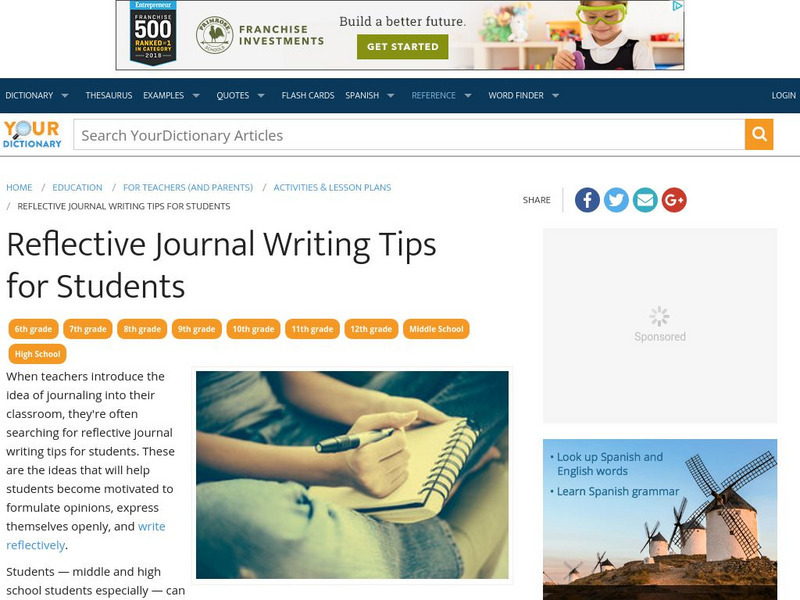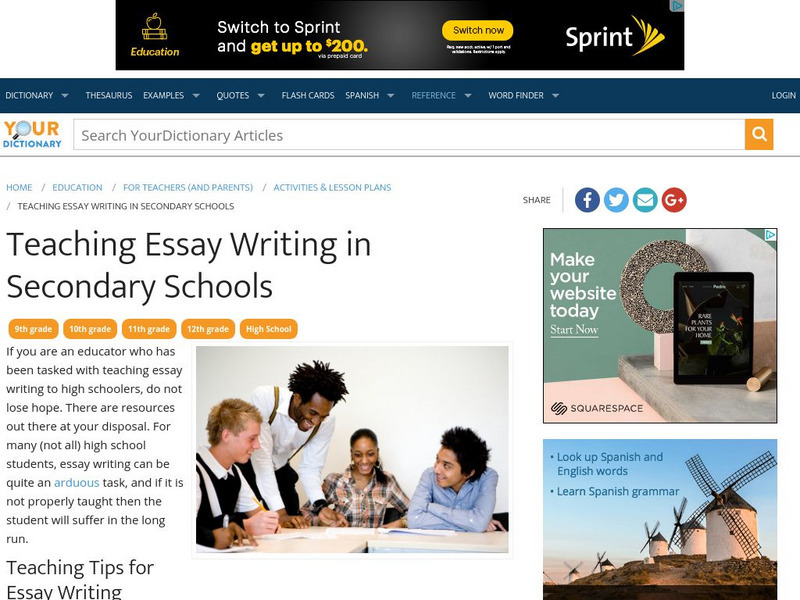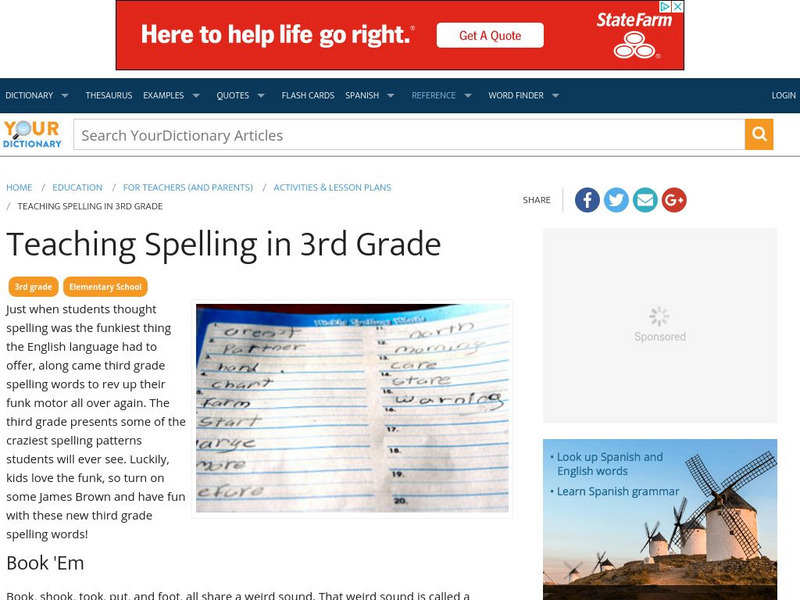Love To Know Media
Your Dictionary: Teaching Confused and Unfamiliar Words
This article provides tips for teaching confused and unfamiliar words to students. These include being familiar with the words, using pictures to visualize the words, and practicing.
Love To Know Media
Your Dictionary: Lesson Plan for Writing a Movie Summary
This lesson focuses on teaching high school learners to write a movie summary that provides a plot summary without sharing too much of the storyline but includes the following: brevity, conflict, theme, tone, and persuades others to want...
Love To Know Media
Your Dictionary: Lesson Plan on How to Teach Conjunctions
This lesson focuses on teaching conjunctions including activities, links to conjunction lists and online resources, and lesson plan ideas.
Love To Know Media
Your Dictionary: Lessons About Adjectives vs. Adverbs
This site offers six fun lessons to help students learn the correct usage of adjectives and adverbs.
Love To Know Media
Your Dictionary: Teaching Resources and Activities for Sight Words for 8th Grade
This article offers a list of words that 8th graders should know by sight and links to several online resources for teachers including Internet4Classrooms, Puzzlemaker, Tools for Educators, and Fun With Words.
Love To Know Media
Your Dictionary: What Are Third Grade Lessons Using Picture Books?
This article suggests uses for picture books in 3rd-grade classes including for sequencing, imagery, to determine the main idea, to create their own picture books, to create the missing connection between picture and text, and to aid...
Love To Know Media
Your Dictionary: Teaching Plural Possessives
This site focuses on teaching plural possessive nouns and pronouns including what they are and methods of teaching them including using flashcards, and plural possessive Bingo, Wheel of Fortune, and Jeopardy.
Love To Know Media
Your Dictionary: 4th Grade Grammar
This article focuses on the grammar of 4th grade including the beginning of more adult conversation, a grammar review from previous grades, more irregular verbs, prepositions and prepositional phrases, and improved sentence structure.
Love To Know Media
Your Dictionary: 2nd Grade Grammar
This article focuses on the skills 2nd graders begin to learn including increased vocabulary, context clues, spelling patterns, tone and rhythm, punctuation, and language development.
Love To Know Media
Your Dictionary: 3rd Grade Grammar
This article focuses on the grammar and punctuation that third graders need to learn including the parts of speech (nouns, verbs, adverbs, and prepositions), punctuation marks (question mark, exclamation points, and periods), and the...
Love To Know Media
Your Dictionary: 5th Grade Grammar
This article focuses on the grammar learned in the 5th grade including writing narrative paragraphs, homonyms, synonyms, and irregular plurals.
Love To Know Media
Your Dictionary: 6th Grade Grammar
This article focuses on grammar generally taught in 6th grade including more complicated reading material; roots, prefixes, and suffixes; and subjective and objective pronouns.
Love To Know Media
Your Dictionary: 7th Grade Grammar
This article focuses on 7th-grade grammar which requires having a greater understanding of the grammar learned previously and using the parts together. This includes understanding the parts of speech, pronouns, clauses, and punctuation;...
Love To Know Media
Your Dictionary: 9th Grade Grammar
This article focuses on 9th-grade grammar including the expectation for good grammar skills in all subjects. Things like run-on sentences and fragments are no longer tolerated.
Love To Know Media
Your Dictionary: Classroom Rebuses
This article discusses the use of rebus (combination of pictures and words) puzzles and stories in the classroom; it also supplies a list of online sources for rebus puzzles and stories.
Love To Know Media
Your Dictionary: Grammar Identify Objects
This article focuses on identifying objects in sentences including direct objects, indirect objects, and objects of prepositions. Examples of each are provided.
Love To Know Media
Your Dictionary: High School English Literary Terms
This article focuses on a variety of key literary terms used in high school English including their definitions. These terms include flashback, genre, irony, parody, satire, setting, subplot, tone, and symbol.
Love To Know Media
Your Dictionary: Lesson on Teaching Compound Words
This lesson focuses on teaching compound words and is specifically designed for second grade; however, it could be adjusted for other grades.
Love To Know Media
Your Dictionary: Lesson Plans on Writing Short Stories
This lesson focuses on teacher preparation of lesson plans before attempting to teach students to write short stories. It includes questions to ask yourself, ideas for activities, and a sample lesson plan.
Love To Know Media
Your Dictionary: Reflective Journal Writing Tips for Students
This site focuses on reflective journal writing including the benefits to students, ways to deal with writer's block, and tips for journal writing.
Love To Know Media
Your Dictionary: Teaching Essay Writing in Secondary Schools
This site focuses on teaching essay writing to high school students including the basic five-paragaph essay, tips for teaching essay writing, and examples of guides.
Love To Know Media
Your Dictionary: Teaching Spelling in 1st Grade
This article focuses on teaching spelling to first graders including Dolch sight words for 1st grade and strategies for teaching spelling such as syllabification, drawing symbols with words, matching words with pictures, and playing...
Love To Know Media
Your Dictionary: Teaching Spelling in 2nd Grade
This article focuses on teaching spelling to 2nd graders including the Dolch sight words for 2nd grade, the number of spelling words per week, and links to online resources.
Love To Know Media
Your Dictionary: Teaching Spelling in 3rd Grade
This article focuses on teaching 3rd grade spelling including Dolch sight words for 3rd grade and the weird spelling patterns that 3rd graders face such as the letter Y, diphthongs, double consonants, and homophones.











